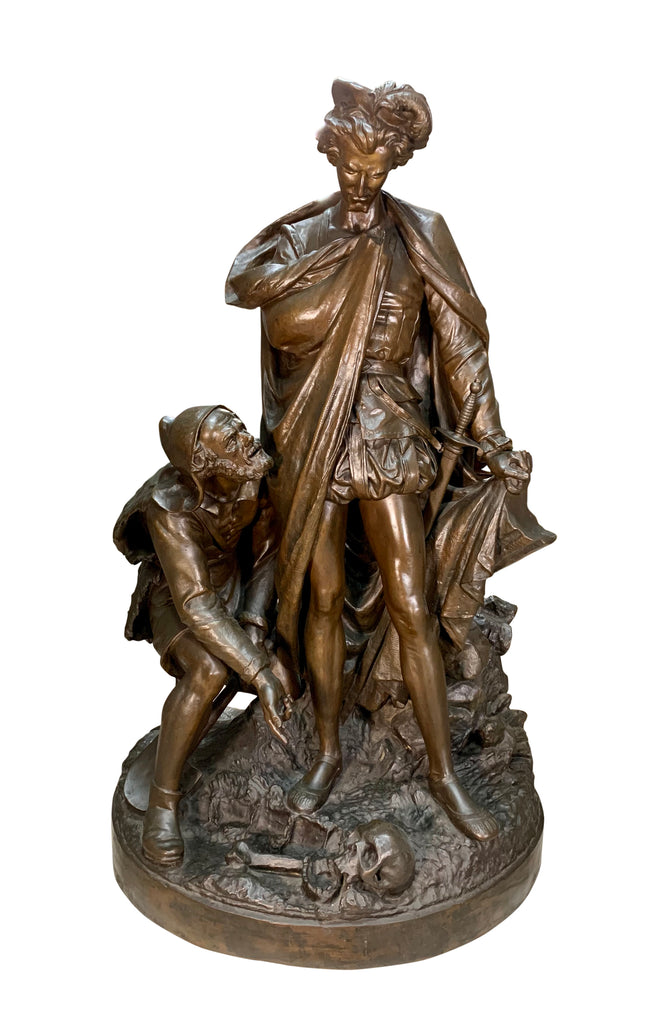A MONUMENTAL FRENCH BRONZE SCULPTURE OF PRINCE HAMLET AND THE GRAVEDIGGER, 19TH CENTURY
$85,000.00
Step into the world of Shakespearean drama with the Monumental 19th Century French Bronze, a captivating depiction of Prince Hamlet and the Gravedigger from Act V, scene i, of Shakespeare's timeless tragedy. Crafted with monumental artistry, this bronze sculpture is a testament to the intersection of classical literature and visual expression.
The sculpture, cast by the skilled hands of Victor Thiebaut in Paris, transports viewers to a pivotal moment in Hamlet's narrative. The scene unfolds with Prince Hamlet engaged in conversation with the Gravedigger, offering a profound reflection on life, mortality, and the human condition. The bronze medium adds a layer of permanence to this poignant theatrical moment, capturing the essence of Shakespeare's enduring words in a visual masterpiece.
The base of the sculpture bears the signature of the master caster, proudly inscribed as "Par Vor Thiebaut 1865," attesting to the craftsmanship and historical significance of this work. Additionally, the inclusion of "Costa De B", invites intrigue, hinting at the collaborative effort and artistic dedication involved in bringing this monumental piece to life.
As you behold this remarkable bronze, you are immersed in the dramatic narrative of one of literature's most iconic scenes. The Monumental 19th Century French Bronze by Victor Thiebaut stands as both a homage to Shakespeare's brilliance and a celebration of the sculptor's mastery, inviting admirers to connect with the profound themes explored in Hamlet's tragic tale.
Cast by Victor Thiebaut, Paris.Signed on base: Par Vor Thiebaut 1865. and Costa de B.




















